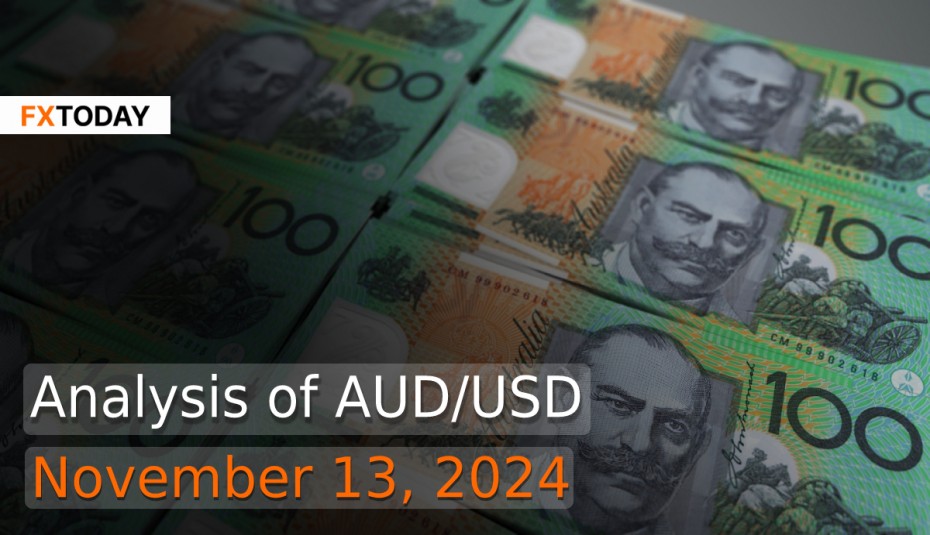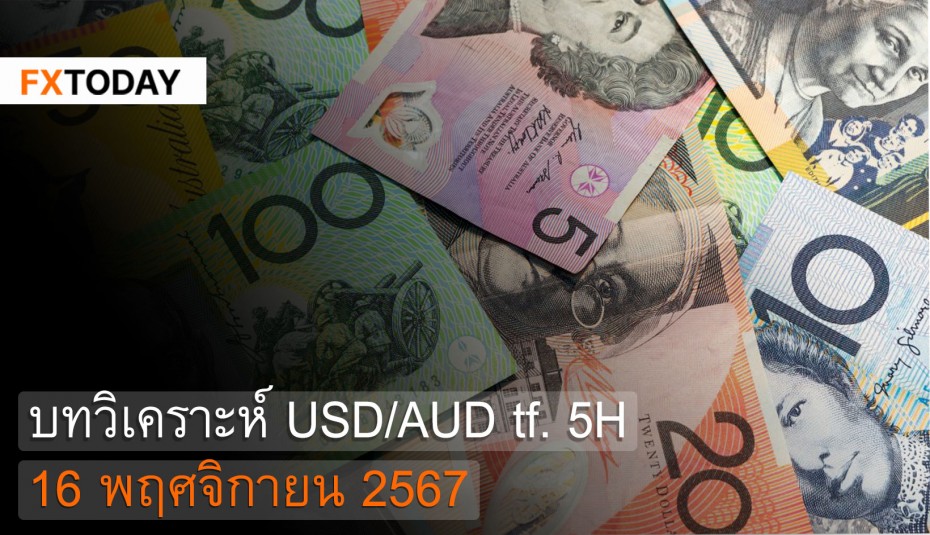Australian Dollar Under Pressure Amid China Slowdown, Wage Growth Dip, and RBA Rate Hold
The Australian dollar is under sustained pressure, reflecting broader concerns about China’s slowing economy and its impact on Australia, given their close trading ties. Australia's wage growth decelerated in the third quarter due to new labor market entrants and easing inflation, hinting at a potential shift toward a looser monetary policy. However, the Reserve Bank of Australia (RBA) maintained its cash rate at 4.35% in November, suggesting that the path toward rate cuts remains uncertain, as inflation pressures linger despite recent declines.
While headline inflation has returned to within the RBA’s 2-3% target at 2.8%—largely influenced by temporary government subsidies—core inflation remains sticky at 3.5%, indicating that inflationary pressures are more deeply rooted. The RBA anticipates it could take until 2026 to achieve consistent target inflation levels, underscoring a protracted battle against inflation.
Although Australian GDP growth has softened and consumer spending weakened, the labor market has stayed surprisingly robust, with job growth outpacing other developed economies. This resilience keeps the central bank wary of easing policy prematurely, fearing that core inflation could be rekindled by strong employment and housing cost pressures.
Notably, Australia’s cautious policy stance contrasts sharply with the rate-cutting approaches of other central banks, particularly in the U.S. and Europe, as inflation recedes there. The RBA’s commitment to maintaining high rates until inflation stabilizes signifies its priority on long-term price stability, even if this means sacrificing short-term growth.
On the consumer and business front, confidence has shown signs of resilience. Business confidence hit its highest in nearly two years in October, supported by steady sales and easing cost pressures. Consumer sentiment rose again in November, driven by growing belief that rate hikes have likely peaked. However, sentiment remains vulnerable to external shocks, such as the recent U.S. presidential election results, which introduced uncertainty over global trade policies that could impact Australia’s key export markets, particularly China. Meanwhile, the trade outlook for Australia remains mixed. September’s trade surplus hit a four-year low as exports of key commodities like metal and minerals declined amid weak Chinese demand.
The U.S. dollar held strong near a recent peak, driven by investor optimism about economic policies anticipated under Donald Trump’s presidency. Markets are pricing in potential tax cuts and trade tariffs, which are viewed as inflationary and growth-stimulating.
This outlook has pushed up Treasury yields, with investors speculating that the Federal Reserve may adopt a less aggressive approach to further rate cuts. With Republicans set to control Congress, Trump could more easily enact his pro-growth, tax-cutting agenda, intensifying expectations of rising inflation. In this context, today’s CPI report is key—any inflation surge might reinforce the likelihood of a more conservative Fed stance on rate cuts in December.
Meanwhile, American consumers are showing increased optimism, according to a survey by the New York Fed. Consumers expect near-term inflation to ease, with one-year expectations falling to 2.9%, their lowest in four years. Expectations for inflation over three and five years have also declined, suggesting confidence in long-term price stability.
The survey also revealed greater optimism in the labor market, as fewer consumers anticipate a rise in unemployment, and the likelihood of job loss is at its lowest since early 2022. Improved job security is mirrored by a slight drop in debt-default risk, as households are more confident in managing credit obligations and accessing credit.
These trends reflect a mixed economic landscape where inflation is gradually easing, employment remains strong, and credit conditions are stabilizing. However, the potential for an inflationary fiscal push under the Trump administration introduces new uncertainties, which may prompt the Fed to carefully weigh its next steps in rate adjustments. This may result in the AUD/USD pair trading within the current range, with potential for slight movement toward the lower end in the near term.
Data for Technical Analysis (1H) CFD AUD/USD
Resistance : 0.6540, 0.6542, 0.6545
Support : 0.6534, 0.6532, 0.6529
1H Outlook
Source: TradingView
Buy/Long 1 If the support at the price range 0.6526 - 0.6534 is touched, but the support at 0.6534 cannot be broken, the TP may be set around 0.6542 and the SL around 0.6522, or up to the risk appetite.
Buy/Long 2 If the resistance can be broken at the price range of 0.6540 - 0.6548, TP may be set around 0.6557 and SL around 0.6530, or up to the risk appetite.
Sell/Short 1 If the resistance at the price range 0.6540 - 0.6548 is touched, but the resistance at 0.6540 cannot be broken, the TP may be set around 0.6534 and the SL around 0.6552, or up to the risk appetite.
Sell/Short 2 If the support can be broken at the price range of 0.6526 - 0.6534, TP may be set around 0.6515 and SL around 0.6544, or up to the risk appetite.
Pivot Points Nov 13, 2024 03:08AM GMT
|
Name
|
S3
|
S2
|
S1
|
Pivot Points
|
R1
|
R2
|
R3
|
|---|---|---|---|---|---|---|---|
| Classic | 0.6526 | 0.6529 | 0.6534 | 0.6537 | 0.6542 | 0.6545 | 0.6551 |
| Fibonacci | 0.6529 | 0.6532 | 0.6534 | 0.6537 | 0.654 | 0.6542 | 0.6545 |
| Camarilla | 0.6536 | 0.6537 | 0.6538 | 0.6537 | 0.6539 | 0.654 | 0.6541 |
| Woodie's | 0.6526 | 0.6529 | 0.6534 | 0.6537 | 0.6542 | 0.6545 | 0.6551 |
| DeMark's | - | - | 0.6535 | 0.6538 | 0.6543 | - | - |
Sources: Investing 1, Investing 2
















